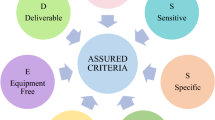Abstract
Minimally invasive biosensing using microneedles (MNs) is a desirable technology for continuous healthcare monitoring. Among a wide range of MNs, porous MNs are expected to be applied for sampling of interstitial fluids (ISF) by connecting the internal tissue to external measurement devices. In order to realize a continuous measurement of biomarkers in ISF through porous MNs, their integration with a microfluidic chip is a promising approach due to its applicability to micro-total analysis system (μTAS) technology. In this study, we developed a fluidic system to directly interface porous MNs to a microfluidic chip consisting of a capillary pump for the continuous sampling of ISF. The porous and flexible MNs made of PDMS are connected to the microfluidic chip fabricated by standard microelectro-mechanical system (MEMS) processes, showing a continuous flow of phosphate buffered saline (PBS). The developed device will lead to the minimally invasive and continuous biosampling for long-term healthcare monitoring.
Graphical abstract











Similar content being viewed by others
Availability of data and materials
The data that support the findings of this study are available from the corresponding author, [author initials], upon reasonable request.
References
Mukerjee EV, Collins SD, Isseroff RR, Smith RL. Microneedle array for transdermal bio- logical fluid extraction and in situ analysis. Sens Actuators, A. 2004;114(2):267–75.
Strambini LM, Longo A, Scarano S, Prescimone T, Palchetti I, Minunni M, Giannessi D, Barillaro G. Self-powered microneedle-based biosensors for pain-free high-accuracy measurement of glycaemia in interstitial fluid. Biosens Bioelectron. 2015;66:162–8.
Chua B, Desai SP, Tierney MJ, Tamada JA, Jina AN. Effect of microneedles shape on skin penetration and minimally invasive continuous glucose monitoring in vivo. Sens Actuators, A. 2013;203:373–81.
Chen D, Wang C, Chen W, Chen Y, Zhang JX. Pvdf-nafion nanomembranes coated microneedles for in vivo transcutaneous implantable glucose sensing. Biosensors and Bioelectronics. 2015;74:1047–1052.
Chinnadayyala SR, Park I, Cho S. Nonenzymatic determination of glucose at near neutral ph values based on the use of nafion and platinum black coated microneedle electrode array. Microchim Acta. 2018;185(5):250.
Sharma S, Saeed A, Johnson C, Gadegaard N, Cass AE. Rapid, low cost prototyping of transdermal devices for personal healthcare monitoring. Sensing and Bio-Sensing Res. 2017;13:104–108.
Humrez L, Ramos M, Al-Jumaily A, Petchu M, Ingram J. Synthesis and characterisation of porous polymer microneedles. J Polym Res. 2011;18(5):1043–52.
Verhoeven M, Bystrova S, Winnubst L, Qureshi H, de Gruijl TD, Scheper RJ, Luttge R. Applying ceramic nanoporous microneedle arrays as a transport interface in egg plants and an ex-vivo human skin model. Microelectron Eng. 2012;98:659–62.
Liu L, Kai H, Nagamine K, Ogawa Y, Nishizawa M. Porous polymer microneedles with interconnecting microchannels for rapid fluid transport. RSC Adv. 2016;6:48630–5.
Nagamine K, Kubota J, Kai H, Ono Y, Nishizawa M. An array of porous microneedles for transdermal monitoring of intercellular swelling. Biomed Microdevice. 2017;19(3):68.
Takeuchi K, Takama N, Kinoshita R, Okitsu T, Kim B. Flexible and porous microneedles of pdms for continuous glucose monitoring. Biomed Microdevice. 2020;22(4):79.
Pu Z, Zou C, Wang R, Lai X, Yu H, Xu K, Li D. A continuous glucose monitoring device by graphene modified electrochemical sensor in microfluidic system. Biomicrofluidics. 2016;10(1):011910.
Zhao Y, Li S, Davidson A, Yang B, Wang Q, Lin Q. A mems viscometric sensor for continuous glucose monitoring. J Micromech Microeng. 2007;17(12):2528.
Rebrin K, Sheppard Jr NF, Steil GM. Use of subcutaneous interstitial fluid glucose to estimate blood glucose: Revisiting delay and sensor offset. J Diabetes Sci Technol. 2010;4(5):1087–1098.
Keenan DB, Mastrototaro JJ, Voskanyan G, Steil GM. Delays in minimally invasive continuous glucose monitoring devices: a review of current technology. J Diabetes Sci Technol. 2009;3(5):1207–1214.
Takeuchi K, Takama N, Kim B, Sharma K, Paul O, Ruther P. Mi- crofluidic chip to interface porous microneedles for isf collection. Biomed Microdevice. 2019;21(1):28.
Ishino C, Reyssat M, Reyssat E, Okumura K, Quéré D. Wicking within forests of micropillars EPL (Europhysics Letters). 2007;79(5):56005.
Zimmermann M, Schmid H, Hunziker P, Delamarche E. Capillary pumps for autonomous capillary systems. Lab Chip. 2007;7:119–25.
Pocock G, Richards CD, Richards DA. Human physiology, Oxford university press. 2013.
Pitts KL, Abu-Mallouh S, Fenech M. Contact angle study of blood dilutions on common microchip materials. J Mech Behav Biomed Mater. 2013;17:333–6.
Bruus H. Theoretical microfluidics, Oxford university press. 2007.
Yao W, Li Y, Ding G. Interstitial fluid flow: the mechanical environment of cells and foundation of meridians, evidence-based complementary and alternative medicine. 2012:9.
Takeuchi K, Mu F, Matsumoto Y, Suga T. Room temperature wafer bonding of glass using aluminum oxide intermediate layer. Adv Mater Interfaces. 2021;:2001741.
Acknowledgements
This work was partially supported by the JSPS Core-to-Core Program (A. Advanced Research Networks).
Funding
This work was partially supported by the JSPS Core-to-Core Program (A. Advanced Research Networks) and the Precise Measurement Technology Promotion Foundation (PMTP-F).
Author information
Authors and Affiliations
Contributions
All authors contributed to the study conception and design. Material preparation, data collection, and analysis were performed by K. Takeuchi, N. Takama, and BJ. Kim. The first draft of the manuscript was written by K. Takeuchi, and all authors commented on previous versions of the manuscript. All authors read and approved the final manuscript.
Corresponding author
Ethics declarations
Ethics approval and consent to participate
Not applicable.
Consent for publication
Not applicable.
Competing interests
The authors declare no competing interests.
Additional information
Publisher's Note
Springer Nature remains neutral with regard to jurisdictional claims in published maps and institutional affiliations.
Rights and permissions
About this article
Cite this article
Takeuchi, K., Takama, N., Sharma, K. et al. Microfluidic chip connected to porous microneedle array for continuous ISF sampling. Drug Deliv. and Transl. Res. 12, 435–443 (2022). https://doi.org/10.1007/s13346-021-01050-0
Accepted:
Published:
Issue Date:
DOI: https://doi.org/10.1007/s13346-021-01050-0




